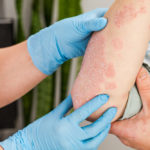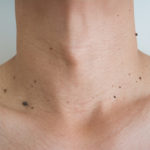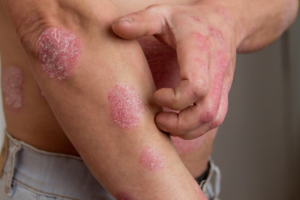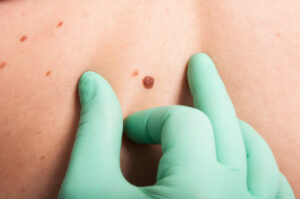
Early detection is key when it comes to melanoma skin safety. If you’re concerned about suspect moles, new freckles, or unusual patches of skin, understanding a few melanoma basics will prepare you to proactively protect your skin’s health.
What is Melanoma?
Melanoma involves the cells in your upper layer of skin responsible for producing pigmentation. Also known as melanocytes, these melanin-producing powerhouses can be damaged by UV radiation from excess sun exposure or tanning beds. Once abnormal cell division within these cells occurs, this type of cancer is more dangerous since it can spread to underlying tissues and organs.
Melanoma is Different Than Basal & Squamous Cell Carcinoma
All types of skin cancer feature a similar mechanism of growth; abnormal cell division replaces normal tissue regeneration within the layers of the skin. As the names imply, basal and squamous carcinomas affect the basal or squamous cells within the inner or outer layers of the skin. These abnormal cell growths are less likely to spread, and generally, involve more superficial layers of tissue. Although less risky than melanoma, prompt dermatology assistance is still a priority.
The Common Risk Factors of Melanoma
There are several considerations to keep in mind when on the lookout for melanoma. There are many common risk factors involved in skin cancer formation and it is important to have a skin care professional who is thorough in their evaluation. Common predisposing factors that increase your risk for developing melanoma include:
- Increasing Age
- History of Sunburns
- Previous Skin Cancer
- Immunosuppressed Individuals
- Family History
- Lighter Skin Tones
You Can Develop Melanoma Without Sun Damage
Even if you’ve always worn sunscreen, covered your skin, and avoided sunny days because of your sensitive skin, family history and other cellular mutations can still lead to the formation of melanoma. To be on the safe side, contact Pennsylvania Dermatology Specialists if you notice any of the ABCDEs of melanoma skin occurrences:
- Asymmetrical: Unusually shaped growths
- Border: Irregular or poorly defined edges
- Color: Varying colors throughout growth
- Diameter: Melanoma is usually 6mm or larger
- Evolving: Growths changing in size
Melanoma is Treatable
Since melanoma is the most dangerous form of skin cancer, it’s important to seek the help of a dermatologist in Southampton, PA if you have any skin concerns. At Pennsylvania Dermatology Specialists, they provide a range of effective treatment solutions, specialize in accurate diagnosis, careful planning, and will help you discover a solution that considers every aspect of your wellbeing.
Featuring evidence-based solutions at Pennsylvania Dermatology Specialists, you can expect comprehensive treatment. Initially, they provide in-depth examinations and acquire detailed tissue samples. Following their experienced diagnosis, they offer tissue-preserving surgical excisions and will tailor a specific healing strategy around your case. Along with the best treatments in the world of dermatology, Pennsylvania Dermatology Specialists is dedicated to trusted follow-up guidance and will provide ongoing support long after effective treatment.








No comment yet, add your voice below!